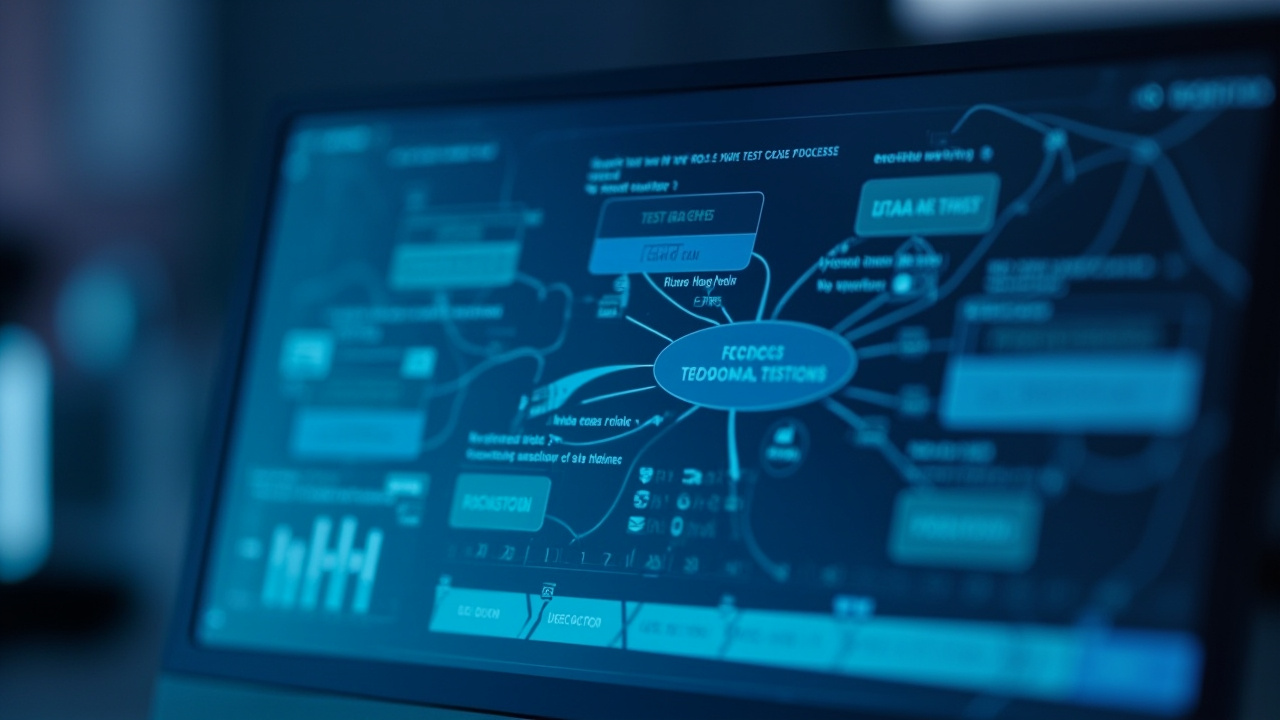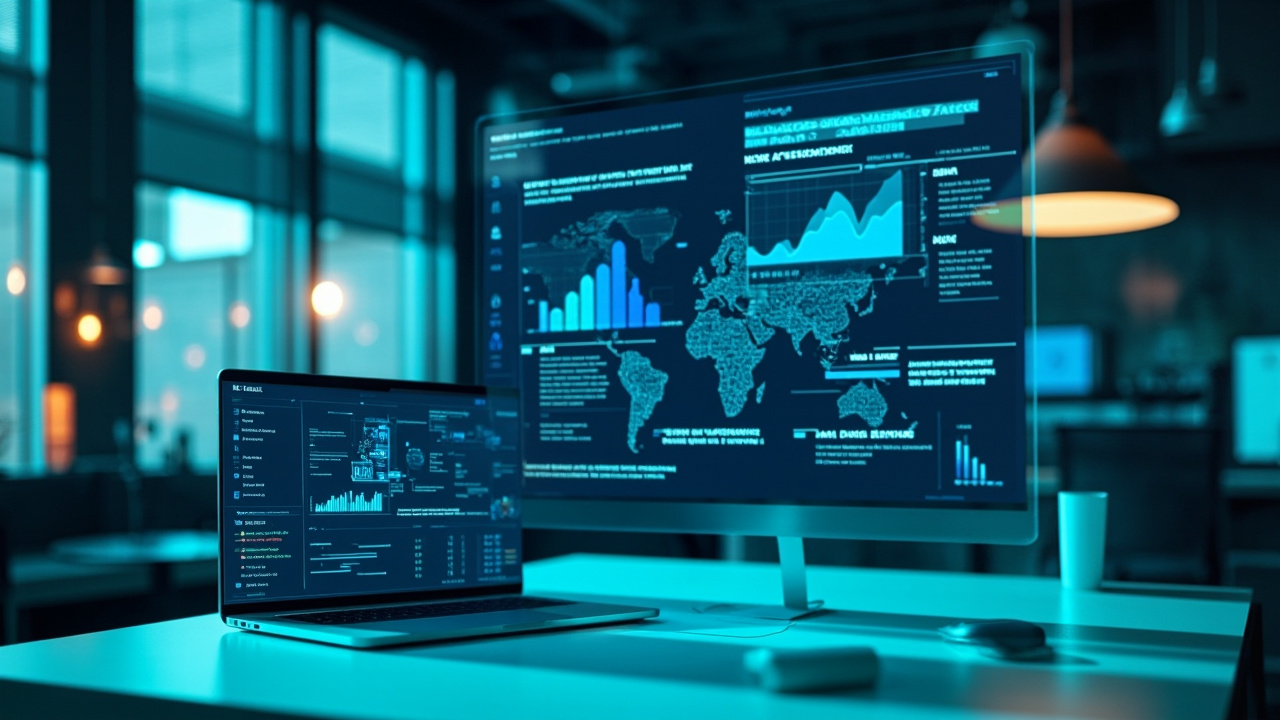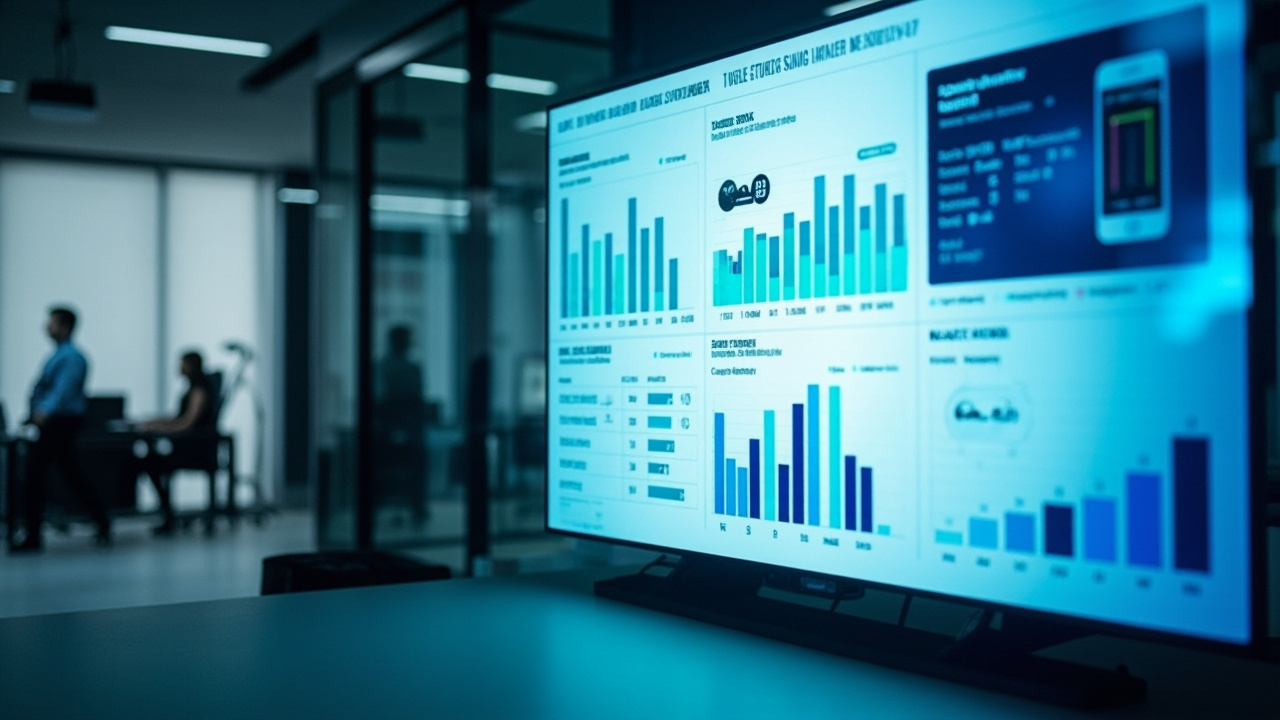In the ever-evolving landscape of technology, software development stands at the forefront, driving innovation and efficiency across various industries. However, as software systems become increasingly complex, ensuring their quality and reliability poses significant challenges. Traditional software testing methodologies often struggle to keep pace with the rapid development cycles and heightened complexity of modern applications. This is where the integration of Artificial Intelligence (AI) into software testing emerges as a game-changer, revolutionizing the way we approach software quality assurance.
AI-powered tools are transforming the software testing arena by enhancing automation, improving accuracy, and reducing human effort. Among these innovative solutions is GenQE, an AI-driven platform that exemplifies the potential of AI in optimizing software testing processes. While our journey will explore the broader landscape of AI in software testing, we’ll also take a closer look at how GenQE and similar platforms are reshaping the industry.
The Evolution of Software Testing: From Manual to Automated

The journey of software testing has been marked by continuous evolution. Initially, testing was a manual process, heavily reliant on human intervention, which often led to errors and inefficiencies. As software applications grew in size and complexity, the need for automation became apparent. This section delves into the historical context of software testing, highlighting the transition from manual to automated processes and setting the stage for AI’s role in this evolution.
The Manual Testing Era
In the early days of software development, testing was a manual process. Testers manually executed test cases, compared results, and documented findings. This approach, while straightforward, was labor-intensive and prone to human error. The limitations of manual testing became glaringly evident as software systems expanded in complexity. For instance, a banking application with hundreds of features would require thousands of test cases to be executed manually, a task both tedious and prone to oversight.
Manual testing also suffered from the subjectivity of human testers, leading to inconsistent results. Different testers might interpret requirements differently, leading to varying test outcomes. This inconsistency often resulted in defects slipping through the cracks, only to be discovered by end-users, sometimes with disastrous consequences.
The Advent of Automation
The introduction of automated testing tools was a pivotal moment in the history of software testing. Automation aimed to reduce human involvement, speed up testing cycles, and increase accuracy. Tools like Selenium and JUnit became popular for automating repetitive tasks, allowing testers to focus on more complex scenarios. Automated tests could be run repeatedly at any time of day, providing consistent results without human intervention.
However, even with automation, challenges persisted, particularly in maintaining test scripts as applications evolved. Automated tests are often brittle; they break easily when the application under test changes, necessitating frequent updates to the test scripts. This maintenance overhead can be significant, detracting from the time saved by automation. Moreover, automation’s initial setup requires substantial effort and resources, which can be a barrier for smaller organizations.
The Rise of AI in Testing
Enter AI a technology that brings unprecedented capabilities to the realm of software testing. AI-driven tools can analyze vast amounts of data, learn from patterns, and make intelligent decisions. This transformative leap addresses many of the challenges faced by traditional testing methods, including script maintenance and test coverage.
AI algorithms can dynamically adapt to application changes, reducing the maintenance burden associated with automated tests. By learning from historical data and user behavior, AI can generate comprehensive test cases that cover a wide range of interactions, improving test coverage and reducing the likelihood of defects escaping into production. This adaptability and intelligence make AI an invaluable tool in the software tester’s arsenal.
“AI in software testing is not just a trend; it’s a necessity for keeping pace with the demands of modern software development.”
Understanding the Role of AI in Software Testing

AI’s integration into software testing is not about replacing human testers but augmenting their capabilities. This section explores the multifaceted roles AI plays in enhancing software testing, from test case generation to defect detection, and how these advancements contribute to improved software quality and faster release cycles.
AI-Driven Test Case Generation
One of the most significant advantages of AI in software testing is its ability to automate the creation of test cases. By analyzing software requirements and user behavior, AI algorithms can generate comprehensive test scenarios that cover a wide range of possible interactions. This not only reduces the dependency on manual test design but also enhances test coverage and efficiency.
For example, consider a social media application with complex user interactions. AI can analyze user behavior data to identify common usage patterns and edge cases, automatically generating test cases that encompass these scenarios. This ensures that the application is tested thoroughly, covering not just the expected use cases but also the unexpected ones that could lead to defects.
Smart Test Execution and Prioritization
AI takes test execution to the next level by intelligently prioritizing test cases based on risk analysis. This ensures that critical areas of the application are tested first, optimizing testing efforts and focusing resources on high-impact defects. Such prioritization is crucial, especially in agile environments where time is of the essence.
In a continuous integration/continuous deployment (CI/CD) pipeline, where changes are integrated frequently and releases happen rapidly, testing must be efficient and effective. AI can prioritize tests that cover the most critical and risky parts of the application, ensuring that defects are caught early in the development cycle, before they have a chance to cause significant damage.
Machine Learning for Defect Detection
AI’s ability to learn from historical data and identify patterns makes it exceptionally effective in defect detection. Machine learning algorithms can detect anomalies early in the development cycle, preventing critical issues from reaching production. This proactive approach not only improves software quality but also reduces costs associated with post-release defect fixes.
For instance, an online retailer using machine learning for defect detection could catch a pricing bug before it leads to revenue loss during a major sales event. By identifying unusual patterns in test results, AI can alert testers to potential defects, allowing them to address issues before they impact customers.
“Harnessing the power of AI in testing allows teams to predict and prevent defects rather than just react to them.”
The Impact of AI on Test Automation

Test automation, a cornerstone of modern software testing, has been significantly enhanced by AI technologies. This section examines how AI improves the efficiency, accuracy, and adaptability of test automation, ultimately leading to better software quality and faster time to market.
Enhancing Automation with AI
AI-driven test automation tools like GenQE offer advanced capabilities that go beyond traditional automation. By leveraging AI and machine learning, these platforms can automatically generate, execute, and analyze test cases, making the testing process more efficient and adaptive. The result is a significant reduction in manual effort and an increase in testing accuracy.
Consider a large enterprise with multiple teams working on different parts of a complex software application. Coordinating testing efforts across teams can be challenging, with traditional automation tools struggling to keep up with the rapid pace of development. AI-driven platforms can streamline testing processes, ensuring that tests are executed efficiently and that results are shared across teams, facilitating collaboration and reducing the risk of defects slipping through the cracks.
Self-Healing Automation Scripts
One of the challenges in test automation is maintaining test scripts as applications evolve. UI changes often lead to script failures, requiring time-consuming updates. AI addresses this issue with self-healing capabilities. Tools like GenQE can automatically adjust test scripts to accommodate changes, minimizing maintenance efforts and reducing downtime.
Self-healing scripts are particularly valuable in agile environments, where frequent changes to the application can lead to high maintenance costs for test automation. By using AI to automatically update test scripts in response to changes, organizations can reduce the time and effort required to keep their tests up-to-date, allowing them to focus on more strategic testing activities.
Comprehensive Test Coverage Across Platforms
AI-powered testing platforms provide extensive coverage across various platforms, including web, mobile, APIs, and cloud environments. This ensures that applications function seamlessly across different devices and operating systems, a critical requirement in today’s interconnected world.
For example, a financial services company with a web and mobile application can use AI-driven testing tools to ensure that their applications perform consistently across all platforms. By automating tests for different devices and operating systems, the company can identify and address issues before they affect users, reducing the risk of customer dissatisfaction and reputational damage.
“AI-driven test automation is not just about efficiency it’s about achieving unparalleled accuracy and adaptability in testing processes.”
Overcoming Challenges in Software Testing with AI

While AI brings numerous benefits to software testing, it also presents its own set of challenges. This section explores the common obstacles faced when integrating AI into testing processes and provides insights into overcoming them to maximize the potential of AI-driven testing.
Data Quality and Availability
AI algorithms rely heavily on data to function effectively. Ensuring the quality and availability of data is crucial for accurate predictions and decisions. Organizations must invest in data management strategies to ensure that their AI-powered testing tools have access to reliable and relevant data.
For instance, a healthcare organization implementing AI-driven testing might need to ensure that their data is anonymized and complies with data protection regulations. Without high-quality data, AI algorithms may produce inaccurate results, leading to incorrect conclusions and potential defects in the software.
Integration with Existing Tools
Integrating AI-driven testing platforms with existing software development tools can be challenging. Seamless integration is essential for maximizing the benefits of AI in testing. Platforms like GenQE offer compatibility with popular CI/CD tools, making it easier to incorporate AI into existing workflows.
Organizations often use a variety of tools for different aspects of software development, from version control to deployment. Ensuring that AI-driven testing platforms work seamlessly with these tools is crucial for maintaining a smooth development workflow. This might involve configuring APIs, setting up automated triggers, or customizing workflows to accommodate AI-driven testing processes.
Skills and Expertise
Implementing AI in testing requires a certain level of expertise. Organizations must invest in training and upskilling their teams to effectively leverage AI technologies. This involves understanding AI algorithms, data analysis, and the specific functionalities of AI-powered testing platforms.
Upskilling testers to work with AI-driven tools can be a significant investment, but it is essential for realizing the full potential of AI in testing. Training programs might cover topics such as machine learning, data analysis, and the use of AI-driven testing platforms, ensuring that testers have the skills they need to work effectively with AI technologies.
“The successful integration of AI in software testing hinges on data quality, seamless tool integration, and the right expertise.”
Real-World Applications of AI in Software Testing

The practical applications of AI in software testing are vast and varied. This section highlights real-world examples of how AI-driven testing tools are being used across industries to enhance software quality, speed up development cycles, and reduce costs.
AI in Agile and DevOps Environments
In agile and DevOps environments, where rapid development and continuous integration are key, AI-driven testing tools play a crucial role. They automate repetitive tasks, provide rapid feedback, and ensure that quality is maintained throughout the development pipeline. By integrating seamlessly with CI/CD tools, AI platforms like GenQE enhance the efficiency and effectiveness of testing processes.
For instance, a software company developing a cloud-based application might use AI-driven testing tools to automate their regression testing. By integrating these tools into their CI/CD pipeline, they can ensure that tests are run automatically whenever changes are made to the codebase, providing rapid feedback and allowing developers to address issues before they affect users.
Case Study: E-commerce Platform
Consider an e-commerce platform that experiences high traffic and frequent updates. By implementing AI-powered testing, the company can ensure that new features are thoroughly tested and that critical defects are identified and addressed before reaching production. This not only improves user experience but also reduces the risk of revenue loss due to downtime or defects.
In this case, AI-driven testing tools could analyze user behavior data to identify common usage patterns and generate test cases that cover these scenarios. By automating the execution of these tests, the company can ensure that their application is tested thoroughly before each release, reducing the risk of defects and improving customer satisfaction.
AI in Mobile Application Testing
Mobile applications present unique testing challenges due to the variety of devices and operating systems. AI-driven testing tools provide comprehensive coverage, ensuring that applications perform consistently across all platforms. This is particularly important for businesses that rely on mobile apps for customer engagement and service delivery.
For example, a retail company with a mobile app might use AI-driven testing tools to automate tests for different devices and operating systems. By ensuring that their app performs consistently across all platforms, the company can provide a seamless user experience, improving customer satisfaction and increasing sales.
“AI’s transformative impact on software testing is evident in its ability to enhance quality, reduce time to market, and drive innovation across industries.”
The Future of Software Testing: Embracing AI for Quality Assurance

As we look to the future, the role of AI in software testing will only continue to grow. This section explores the emerging trends and technologies that will shape the future of testing, highlighting the potential of AI to further revolutionize software quality assurance.
AI and the Internet of Things (IoT)
The proliferation of IoT devices presents new challenges for software testing. AI-powered testing tools are well-suited to address these challenges by providing comprehensive testing across a wide range of devices and environments. As IoT adoption increases, the demand for AI-driven testing solutions will grow.
AI can help ensure that IoT devices function correctly and securely, providing comprehensive testing across a wide range of scenarios. For example, an automotive company developing connected vehicles might use AI-driven testing tools to ensure that their vehicles’ software performs correctly under different conditions, enhancing safety and reliability.
AI and Continuous Testing
Continuous testing is a key component of modern software development, ensuring that quality is maintained throughout the development lifecycle. AI enhances continuous testing by automating repetitive tasks, providing real-time feedback, and enabling rapid iteration. This allows development teams to focus on innovation while maintaining high-quality standards.
For instance, a telecommunications company developing a new network infrastructure might use AI-driven testing tools to automate their testing processes. By integrating these tools into their development pipeline, they can ensure that tests are run continuously throughout the development lifecycle, providing rapid feedback and allowing them to address issues before they affect customers.
The Human-AI Collaboration
While AI offers numerous benefits, the human element remains crucial in software testing. The future of testing will be defined by the collaboration between human testers and AI-driven tools. By leveraging the strengths of both, organizations can achieve unparalleled levels of quality and efficiency.
Human testers bring creativity, intuition, and domain expertise to the testing process, while AI-driven tools offer speed, scalability, and consistency. By working together, human testers and AI-driven tools can ensure that software is tested thoroughly and efficiently, reducing the risk of defects and improving software quality.
“The future of software testing lies in the symbiotic relationship between human expertise and AI-driven innovation.”
Conclusion: Embracing AI for a New Era of Software Quality

The integration of AI into software testing marks a new era in quality assurance. By enhancing automation, improving accuracy, and reducing human effort, AI-driven tools like GenQE are transforming the testing landscape. As software applications grow in complexity, the need for intelligent, adaptable testing solutions becomes increasingly apparent.
For organizations looking to enhance quality, reduce costs, and accelerate development cycles, embracing AI in software testing is not just an option it’s a necessity. By exploring and integrating AI-driven tools, businesses can ensure that they remain competitive in a rapidly evolving digital world.
Explore the future of software testing with AI-driven tools like GenQE, and unlock new levels of quality and efficiency in your development processes.
Discover More Innovative Solutions
Want to learn more about the tools and technologies discussed in this article? Explore how these innovations can be tailored to your specific needs and workflow requirements.
Our team of experts is available to answer your questions and provide personalized insights into how modern solutions like GenQE can address your specific challenges.
If the link above does not work, please visit: https://calendly.com/dm-csimplifyit/30min?month=2025-05